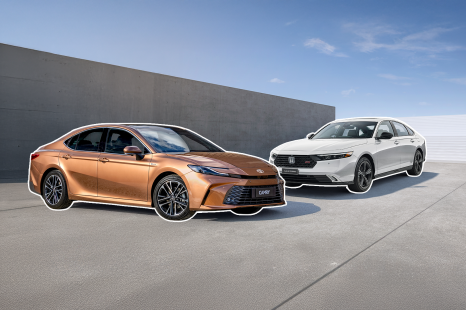

Andrew Maclean
2025 Honda Accord e:HEV RS vs Toyota Camry SL: Spec Battle
3 Months Ago
The sweet spot in the Taycan range has arrived with the GTS. The best bits from the Turbo with a more palatable price tag.



Publisher

Publisher


Publisher

Publisher
Quickly see how this car stacks up against its competition. Select any benchmark to see more details.
Where expert car reviews meet expert car buying – CarExpert gives you trusted advice, personalised service and real savings on your next new car.
There’s no doubt in our mind the product planners at Porsche are the best in the business. No other car company in the world can produce so many different but useful derivatives of its cars in such a consistent and effortless capacity.
The Porsche Taycan is no exception to the rule, with a staggering seven different options on offer already, Porsche Australia is pushing that number to eight with the introduction of the Taycan GTS.
The Taycan range already consists of Taycan (RWD), Taycan 4 Cross Turismo, Taycan 4S, Taycan 4S Cross Turismo, Taycan Turbo, Taycan Turbo Cross Turismo, and Taycan Turbo S. The GTS will slot in between the 4S and the Turbo.

In other Porsche models, such diversification of variants required significant hardware changes. After all, a 911 Turbo S isn’t exactly all that similar to a base 911 Carrera. In the Taycan, though, it’s a little bit more convoluted.
Porsche offers two battery packs, and only the base model and Taycan 4 don’t come with the Performance Battery standard. Outside that, the majority of the performance difference between the six different versions of the Taycan (base, 4, 4S, GTS, Turbo, and Turbo S) is the electric motors and the controllers used to draw power from the battery.
In reality you have three main components in the Taycan that differ: the battery, the battery controller, and the electric motors. Gone are the days of slotting in a bigger engine!
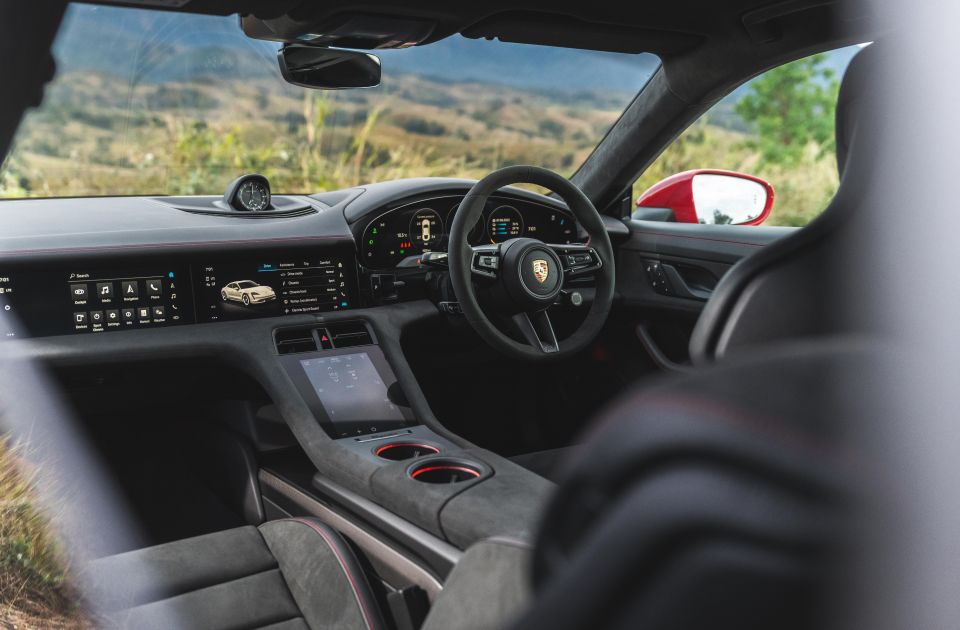
The GTS model on most Porsches has been a variant that comes after the launch of other variants. Porsche product managers like to offer the most expensive models first to early adopters, before producing the base model and what is often the sweet spot in the range, the GTS.
The Taycan GTS sits between the 4S and the Turbo, and provides 440kW of power (using launch control overboost – that’s what Porsche calls it despite not having a turbocharger to boost), and goes from 0-100km/h in 3.7 seconds.
That makes it 0.3 seconds faster and 50kW more powerful than the 4S, and 0.5 seconds slower and 60kW less powerful than the Turbo.
So, you have yet another choice as to which Taycan variant to buy. Should the GTS get your money?
The Porsche Taycan GTS is priced from $241,900 before on-road costs.
As a comparison, it’s a reasonable hike from the $198,800 sticker price for the Taycan 4S but also a relative bargain compared to the Turbo and its $281,900 sticker.
If you had ordered one a little while ago you would have saved about $4000, but Porsche (in line with the rest of the industry) is currently increasing prices more frequently to account for inflation, among other challenges.
So if you want to secure a price before it likely goes up again, probably best to lock in an order.
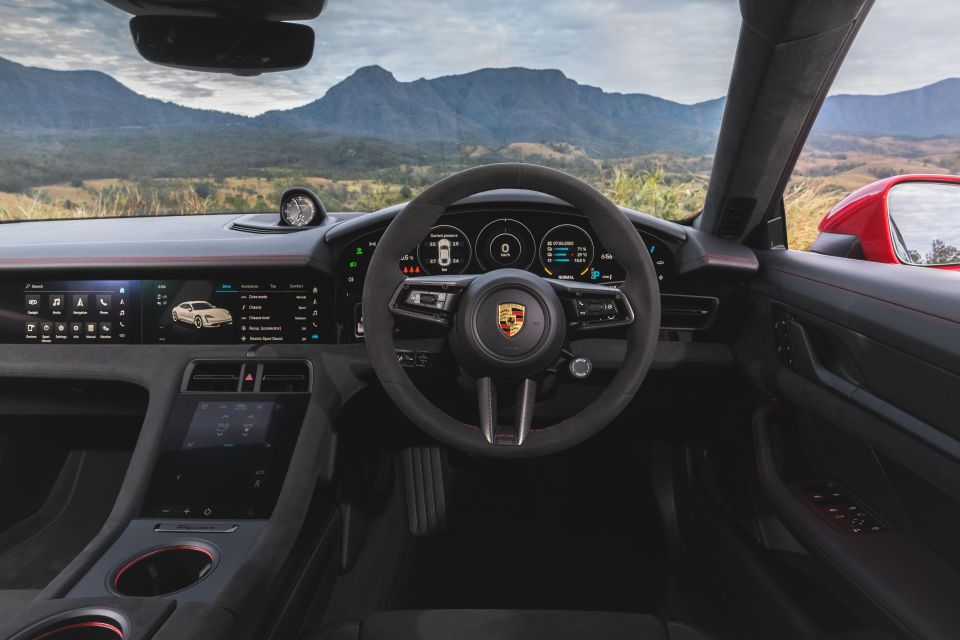
Buy your new car without the stress. It's fast, simple and completely free.

Great service from Travis and team, second time I have used this business would not hesitate to recommend them to anyone
Craig C.
Purchased a Ford Ranger in Sunshine Coast, QLD
CarExpert helped Craig save $7,224 on his Ford Ranger, now let us save you on your next new car.
Get your BEST priceThe Porsche Taycan GTS has a very modern, spacious and nicely put together interior. The differences to the rest of the range are subtle, but GTS fans will recognise them instantly.
The most obvious addition is Porsche’s Race-Tex interior package, which is nicely complemented by the numerous black leather trim accents.
There are very noticeable Porsche GTS logos stitched into the headrests and, surprisingly, the usually optional (on lower grades) Sport Chrono package is standard.


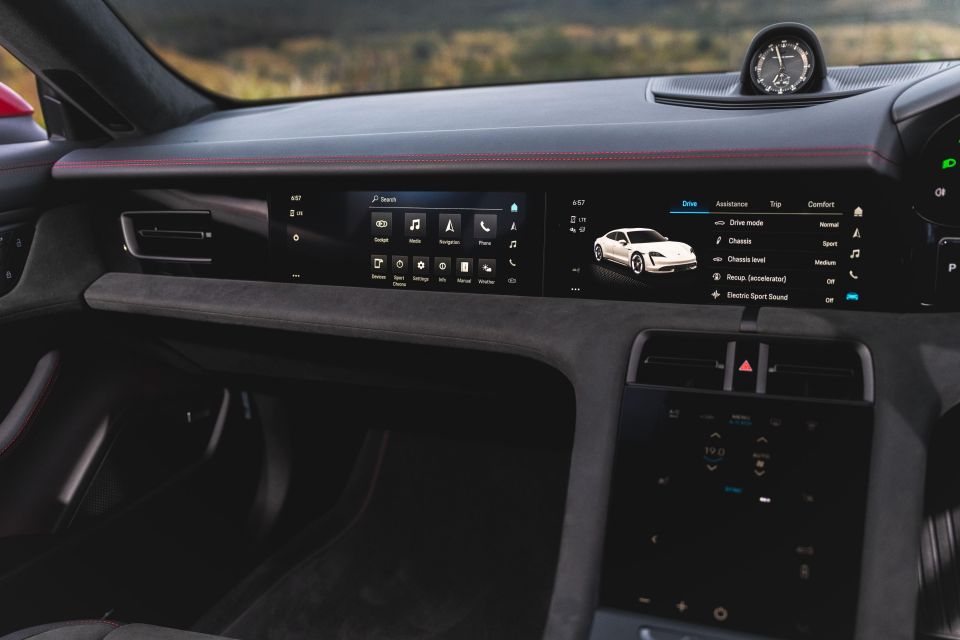

The front seats are sporty but also comfortable, with great back support and adjustability.
Like all Taycans, the rear seats might not be the most suitable place for super tall passengers, but two average-sized adults can happily ride there for long trips. It’s possible to fit five, but you wouldn’t want to do it for long.
The infotainment system is hard to fault and if you option the passenger screen, it becomes a rather dizzying affair with four seperate displays.
The digital instrument cluster is super sharp and displays a great deal of information including your battery usage and even a lap timer – because, Porsche.
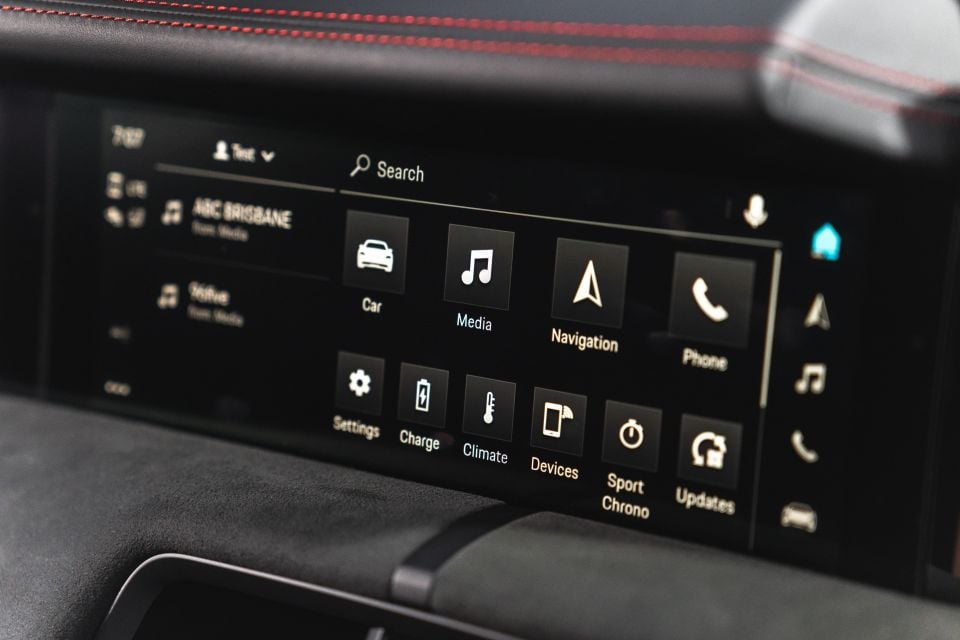

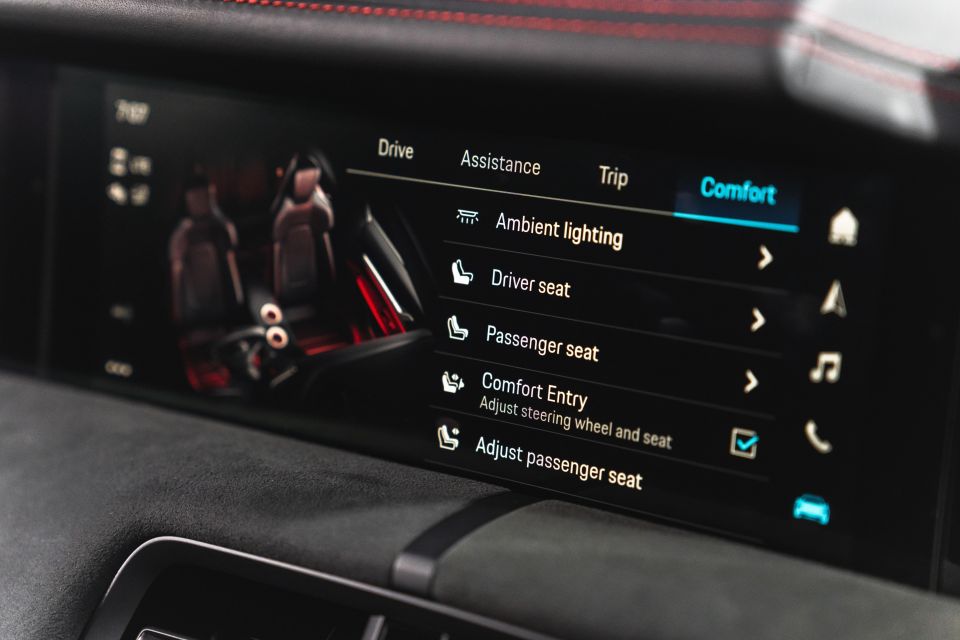
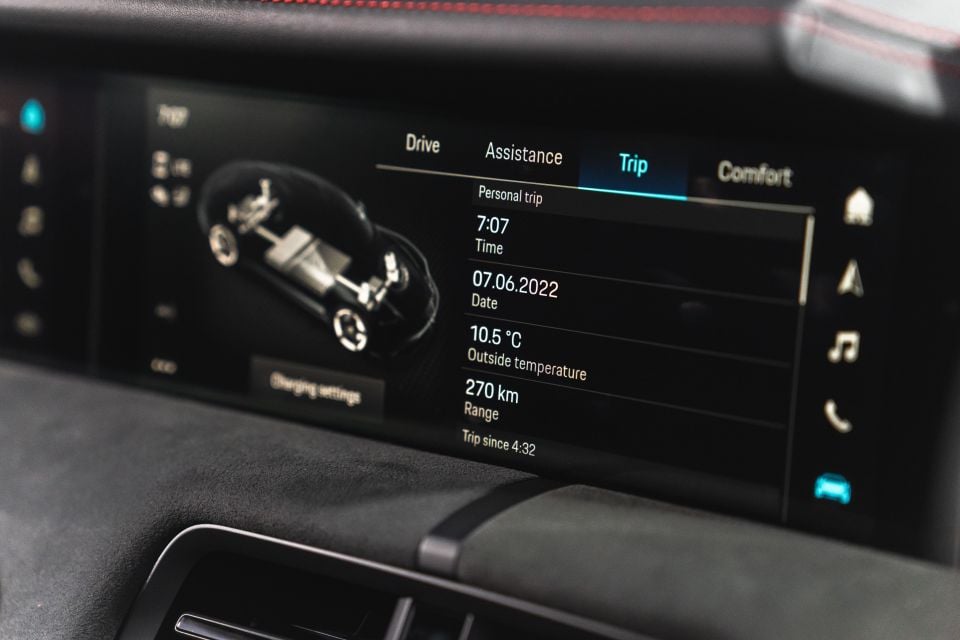
The centre touchscreen controls most of your infotainment needs and does so very quickly and logically.
The built-in navigation is easy to use and fast to load, but the capacity to have seamless and wireless Apple CarPlay integration means you really don’t have to use it.
We found our CarPlay connection to be flawless and the telephone microphone to be almost as good as using the iPhone handheld.

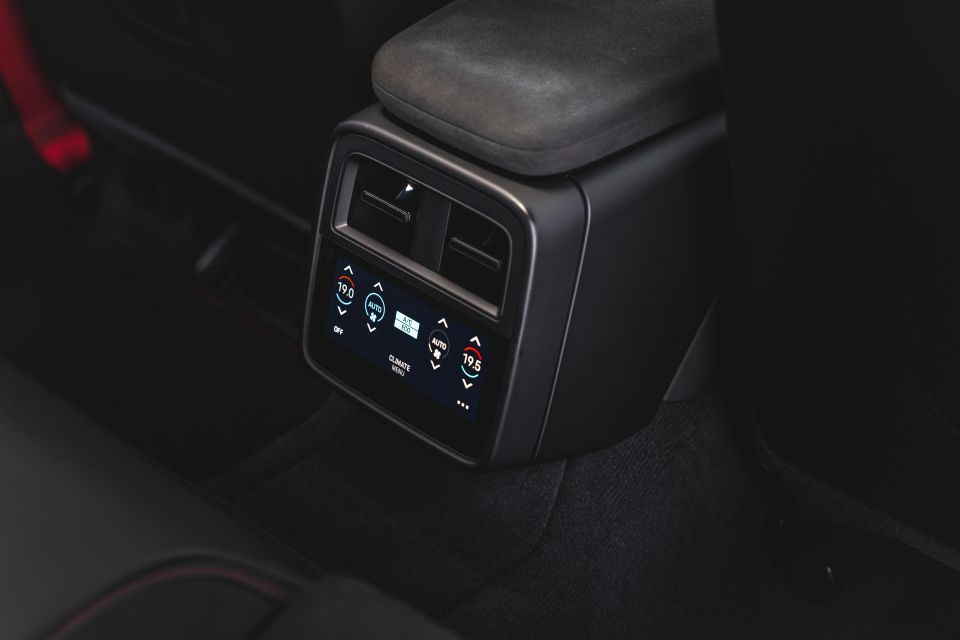
There are some things not to like, for us anyway. For example, the inability to change the direction of the air vents without having to use the climate control screen located under the centre screen.
It feels like its just done for the ‘wow’ factor of being able to move the air around the cabin using a screen but in reality, sometimes you just want to face the vents away or toward you quickly and don’t want to take your eyes off the road to do so.
The GTS also offers a reasonable 84L in the front and 407 litres in the rear for storage.
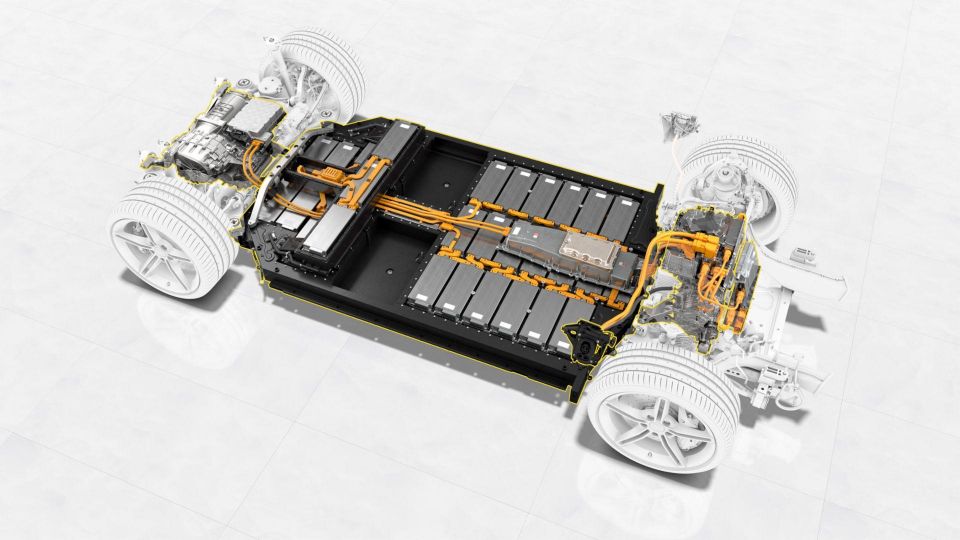
The Taycan GTS borrows a lot of hardware from the Turbo. For starters it uses the top-level Performance Battery Plus with a capacity of 93.4 kWh, mated to two ‘permanently excited’ synchronous electric motors, one at the front and one at the rear.
It allows the Taycan’s 800-volt system to have a standard power rating of 380kW which can be extended to a rather ridiculous 440kW when launch control is engaged, allowing for its claimed 3.7-second 0-100km/h acceleration time. Both modes develop 850Nm of torque at all times.
Porsche claims a driving range of 485km, and we would say from experience to expect somewhere between 430-470km depending on how you’re driving it.
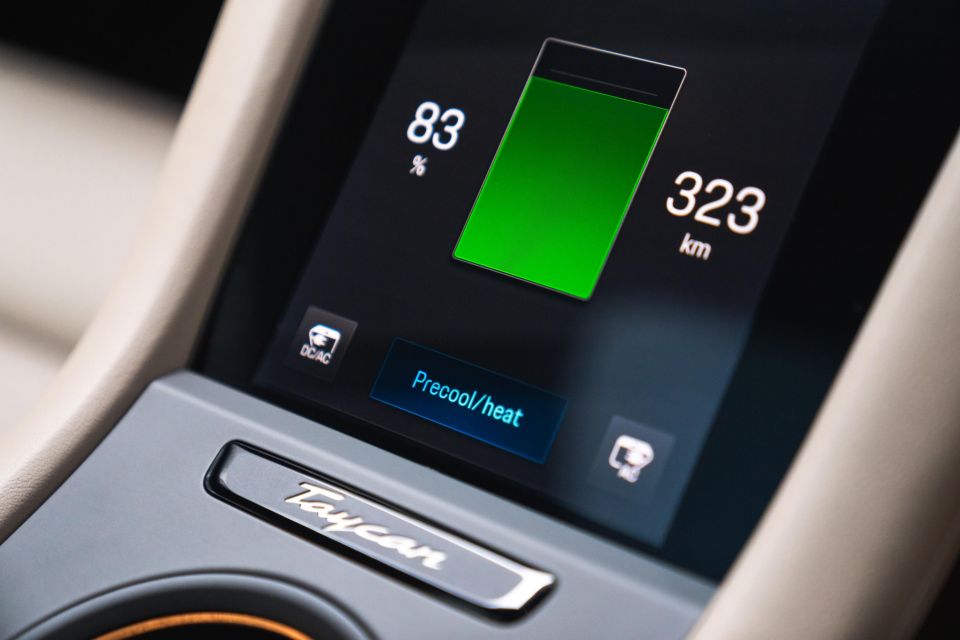
It takes nine hours to recharge the Taycan GTS from empty using an 11kW (AC) power source, 93 minutes on a 50kW DC connection from 5.0 per cent to 80 per cent, and if you go somewhere with a properly DC fast charger, it will do the same 5.0 per cent to 80 per cent in just 22.5 minutes.
In addition to all that, the Taycan GTS uses the same two-speed transmission fitted to the rear axle for better acceleration. It will pass the juice to the front axle only under heavy acceleration or when more grip is required.
The other unique aspect of the Taycan GTS is the soundtrack. Porsche has given the GTS its own unique sound pattern. We couldn’t really tell as we didn’t have another Taycan to listen to, but it’s a dinner conversation starter, that’s for sure.
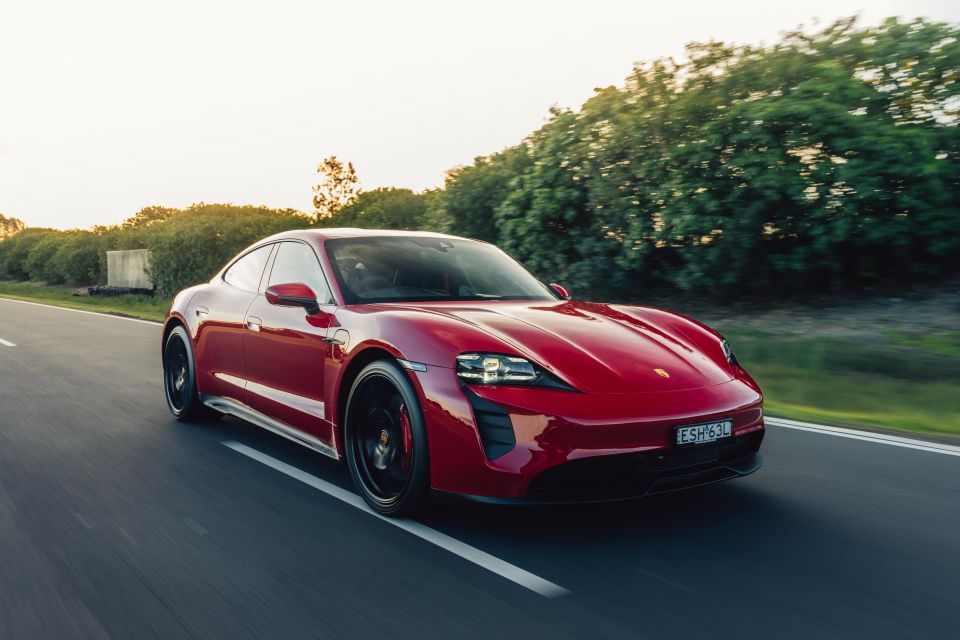
Despite not being the fastest, the GTS variant is actually the sportiest Taycan in terms of driving feel. That’s because it sits lower than even the Turbo S and uses the same brake system, meaning its relatively hefty unladen weight of 2295kg is somewhat offset by its lower centre of gravity.
To prove just how good of a sports car it is, Porsche Australia brought us to Norwell racetrack near the Gold Coast to experience the Taycan GTS in its, err… unnatural environment.
As foreign and as crazy as it sounds (or doesn’t sound) right now, the sight of electric vehicles at track days will soon become the norm. As much as that breaks this author’s internal combustion-loving heart, it’s inevitable.
Look, we don’t probably want to admit it, but the Taycan GTS is surprisingly fun and fast on track. Kind of annoyingly so. Electric cars aren’t meant to be enjoyable when it come to track days, but the GTS proves that wrong.

Yes, it’s still heavy and yes, you will need to do your braking a fair bit earlier than you would in almost any other Porsche, due to the added weight and the braking system itself, but the turn-in and steering feedback is surprisingly great.
Once you get the car rotated, you can basically plant the accelerator and the electric motors on the front and rear axle will work out exactly where to send power, which means it will deliver the best out-of-corner driving experience you’ve probably ever felt.
There is no sense of torque steer, there is no oversteer, there is no understeer, there is nothing but the perfect amount of power and torque for the grip provided by the tyres.
The only downside is the choice of Goodyear Eagle EV tyres, which are clearly better suited to reducing battery consumption on the road than being abused on the track. They annoyingly scream to Greta for mercy each time they are pushed to the limit.
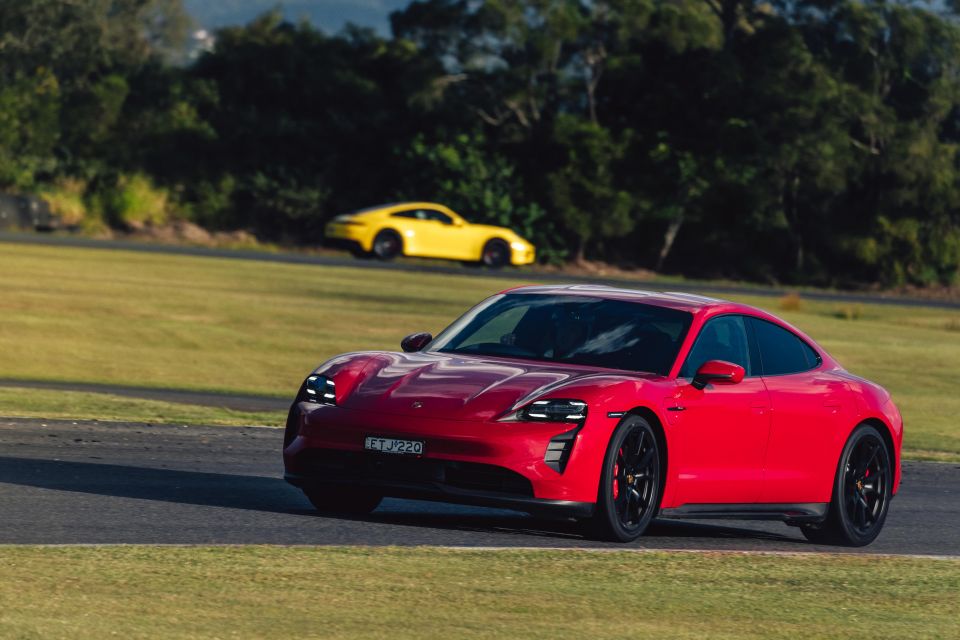
After dozens of laps we can say safely say the Taycan GTS is a genuinely fun track car, and despite being pushed at 10-tenths by dozens of testers and professional drivers, none of the Taycan GTS demonstrators exhibited a single issue in relation to overheating batteries or going into limp-home mode.
That might have something to do with the GTS using the same electric motors as the Turbo, which have a hairpin-winding design that allows their copper wiring to be packed more densely, not only increasing the amount of copper in each stator for more power and torque, but also making for more efficient cooling.
The crazy-large cast-iron brakes (six-piston 390mm front and four-piston 358mm rear) also laughed in the face of repetitive braking cycles, with drivers able to put their hand right up to the front wheels after a dozen laps and not feel a great deal of heat.
We also drove the Taycan GTS on the road and, like every other Taycan, it was hard to fault.

The ride is smooth, cabin noise intrusion is virtually non-existent and instantaneous torque is always just a tap of the right foot away. We did definitely feel the two-speed transmission in action when going hell for leather too.
As for the launch control system? There are only so many times you’ll want to go from 0-100km/h in 3.7 seconds before the party trick wears off. It’s something you will definitely show friends or scare the wife with occasionally, but otherwise it’s moot.
If you read our previous review of the base Porsche Taycan, we recommended it as the ideal variant to go for as it provides almost the same experience as the Turbo S for 90 per cent of the time for most buyers.
That viewpoint hasn’t changed, but the introduction of the GTS really does give pause to the idea of paying an extra $40,000 for the Turbo so you can go half a second faster to your third speeding ticket this month.
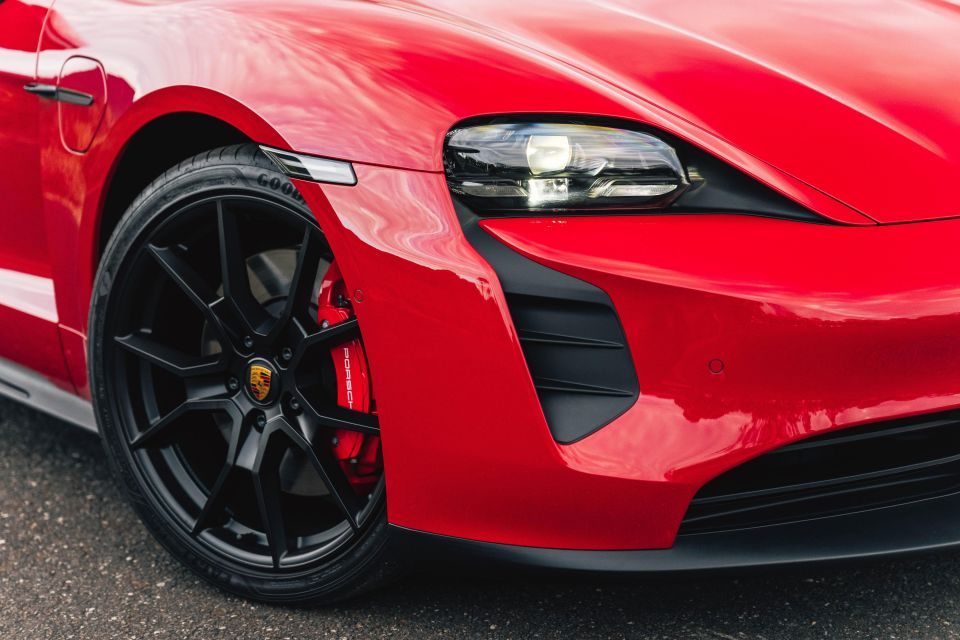
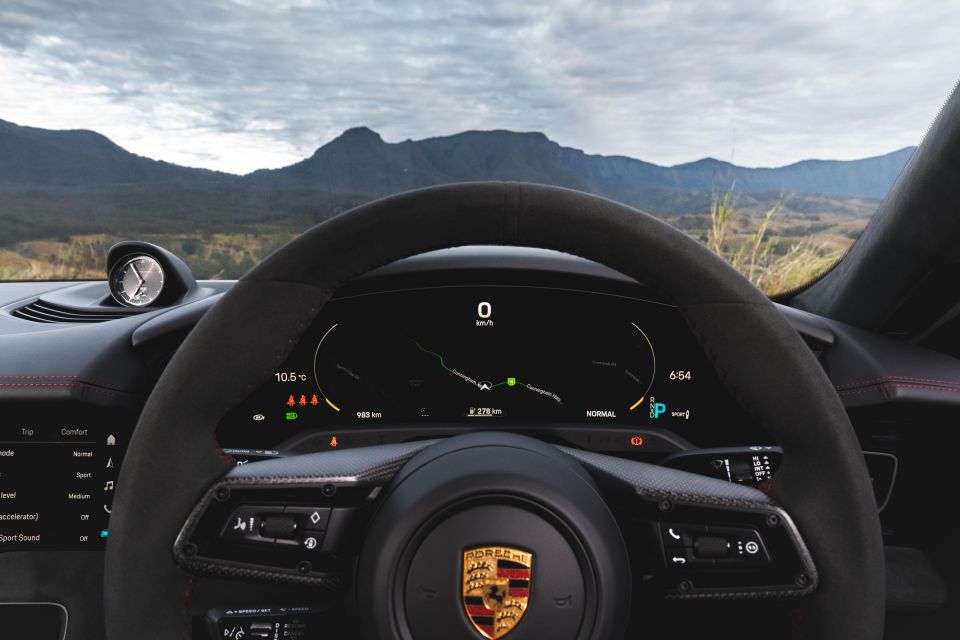

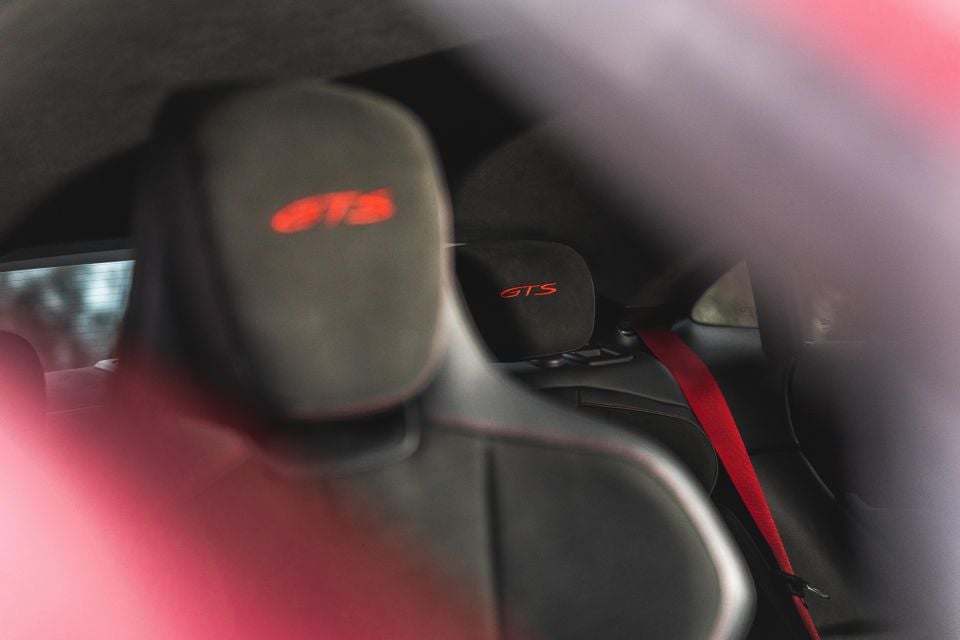
Where expert car reviews meet expert car buying – CarExpert gives you trusted advice, personalised service and real savings on your next new car.
Unlike the rest of the range, the GTS has unique exterior and interior packaging options that are very appealing. As is generally the case with all GTS models, there are a lot of black details inside and out.
Looking at the car from the outside, you will first notice the tinted Matrix LED headlights, which on the GTS have the Porsche Dynamic Light System Plus (PDLS Plus) as standard.
The GTS also rides on the 20-inch Taycan Turbo S aero design wheels in satin Black. Move further to the back and you might also notice the rear diffuser (in louvered design), side skirts (SportDesign) and side window trims are all in in high-gloss black.
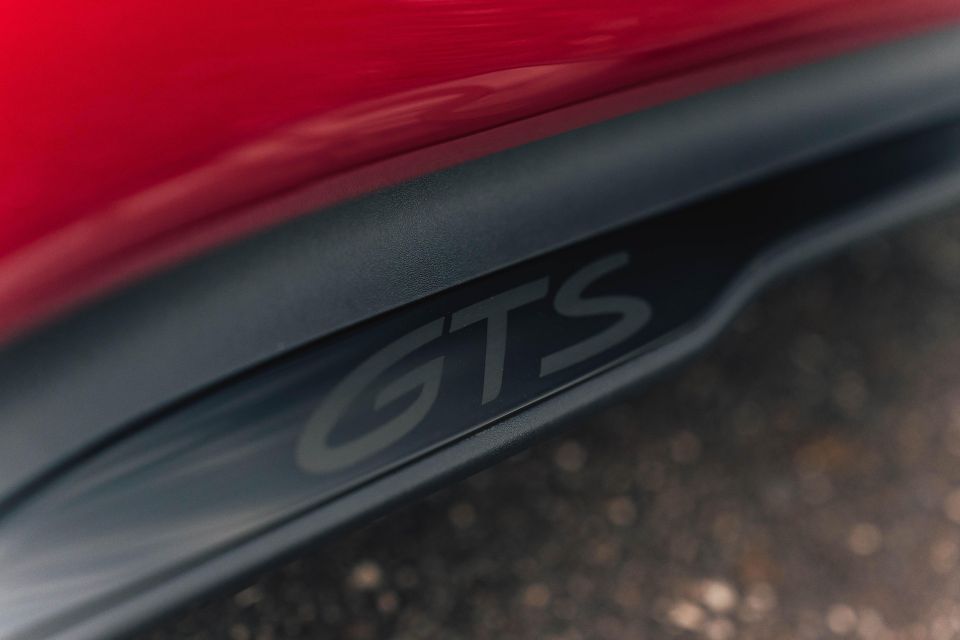
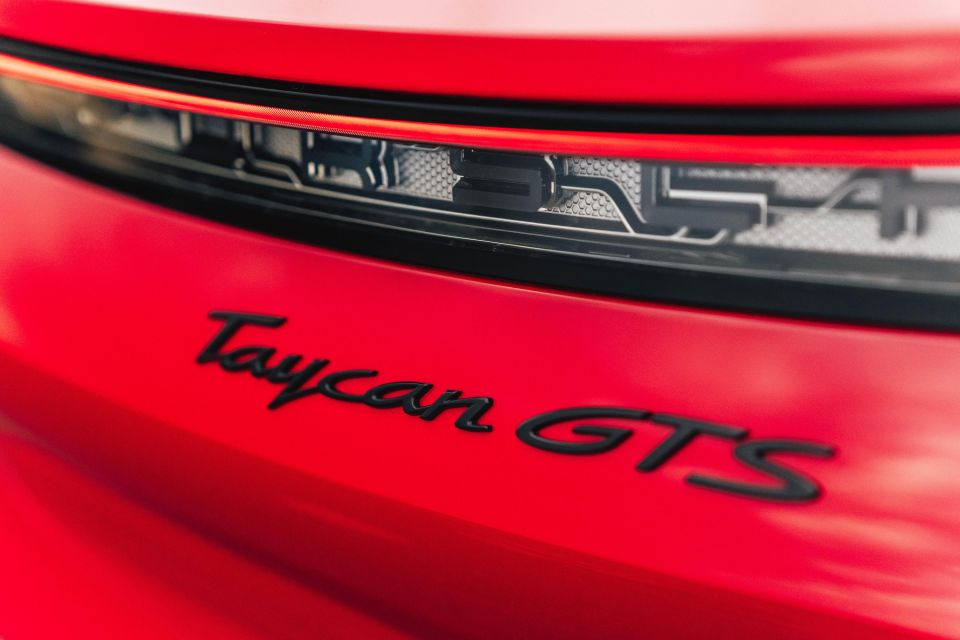
Other change include the SportDesign front apron, door sill guards in brushed black Aluminium (with a stainless steel loading edge protection guard) and our favourite, the Porsche logo in black integrated into the light strip alongside the GTS model designation on the tailgate in matte black.
Jump in and the changes are equally noticeable. From the Race-Tex interior package with extensive leather items, including a heated GT sports steering wheel all in black to the ‘GTS’ logo on the seat headrests (front and rear) and a fair amount of black accents used around the cabin, it’s a GTS in name and nature.
As for colour, if you don’t go the traditional red as is often the hero colour of all GTS models, the Taycan GTS is available in two different solid colours and 11 different metallic paint finishes.
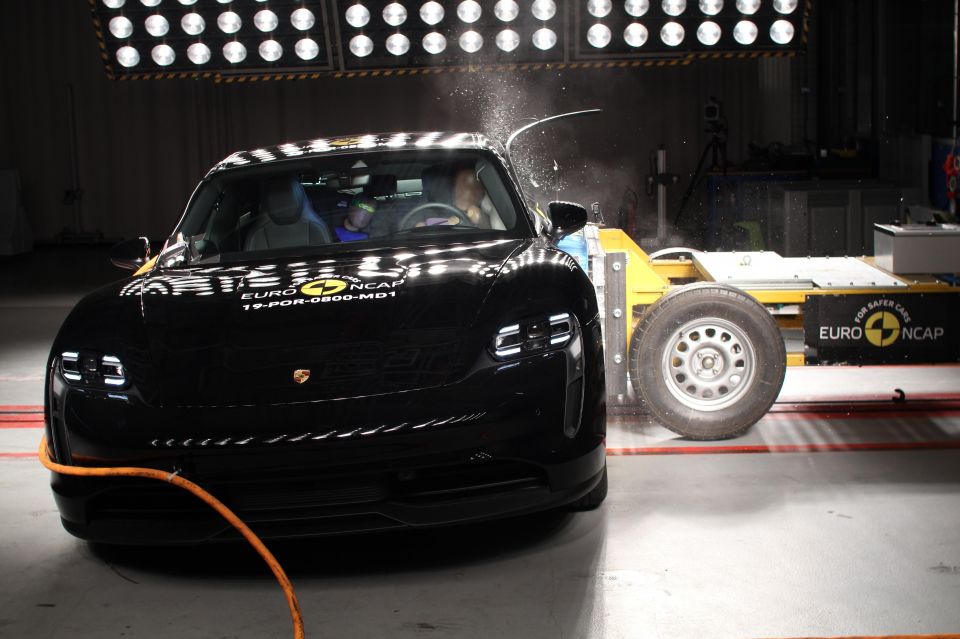
The Porsche Taycan range scored a five-star safety rating in Euro NCAP testing, but there is no ANCAP equivalent rating as yet.
It scored 85 per cent for adult occupant protection, 83 per cent for child occupant protection, 70 per cent for vulnerable road user protection, and 73 per cent for safety assist.
Autonomous emergency braking (AEB), lane-keep assist, and blind-spot monitoring are standard, along with adaptive cruise control.
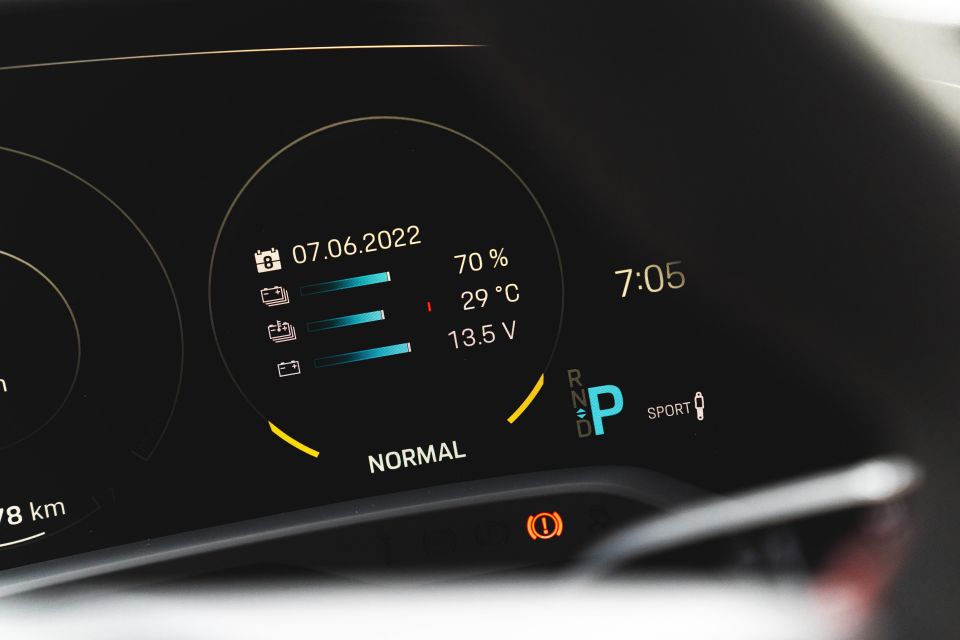
The Porsche Taycan is covered by a three-year, unlimited-kilometre warranty.
It would be nice to see that warranty extended to five years, in line with most other premium manufacturers. The battery warranty is eight years/160,000km.
Another strange thing is the cost of maintenance, which is required every 12 months or 15,000km, whichever comes first. You can prepay for three, four or five years of servicing, which comes in at $2995, $4495 and $5495 respectively.
According to what we could dig up, the only thing Porsche is doing to your Taycan for its service is a pollen and air filter replacements every two years and a brake fluid flush when required (or every two years).
What else Porsche is doing to service the Taycan remains a bit of a mystery to us, as Tesla servicing is basically when the tyres or brakes need replacing.
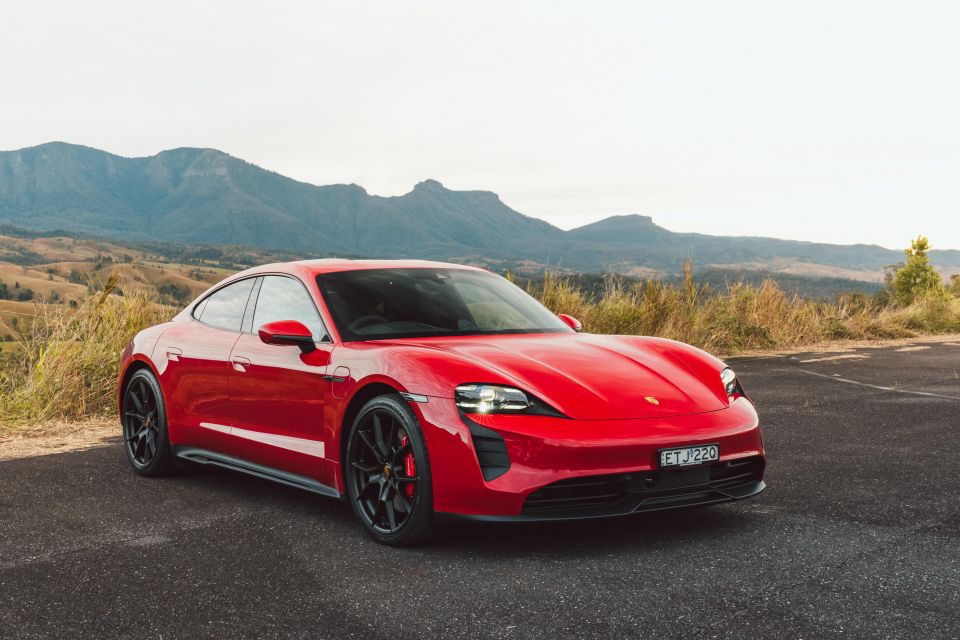
Buy your new car without the stress. It's fast, simple and completely free.

Great service from Travis and team, second time I have used this business would not hesitate to recommend them to anyone
Craig C.
Purchased a Ford Ranger in Sunshine Coast, QLD
CarExpert helped Craig save $7,224 on his Ford Ranger, now let us save you on your next new car.
Get your BEST priceIf you have been waiting to buy a Porsche Taycan, you now have more choice than ever.
For us, the base model is still the easiest and most efficient way to own your first electric Porsche and, although it’s not the fastest or most aggressive looking model in the range, it does a fantastic job of being an electric Porsche.
As for the Taycan GTS, the latest addition to the range solves an annoying dilemma for those that don’t want ‘just a 4S’ but also don’t feel the need to spend an extra $83,100 for the Turbo, to then still be one rung under the Turbo S.
The GTS fills that gap really well. It’s a beautiful and respected badge, and one with a great heritage that has been lived up to with the Taycan. It sits lower, looks meaner, and if you ever feel the need to actually track it, it’s probably the Taycan variant best suited for the task.
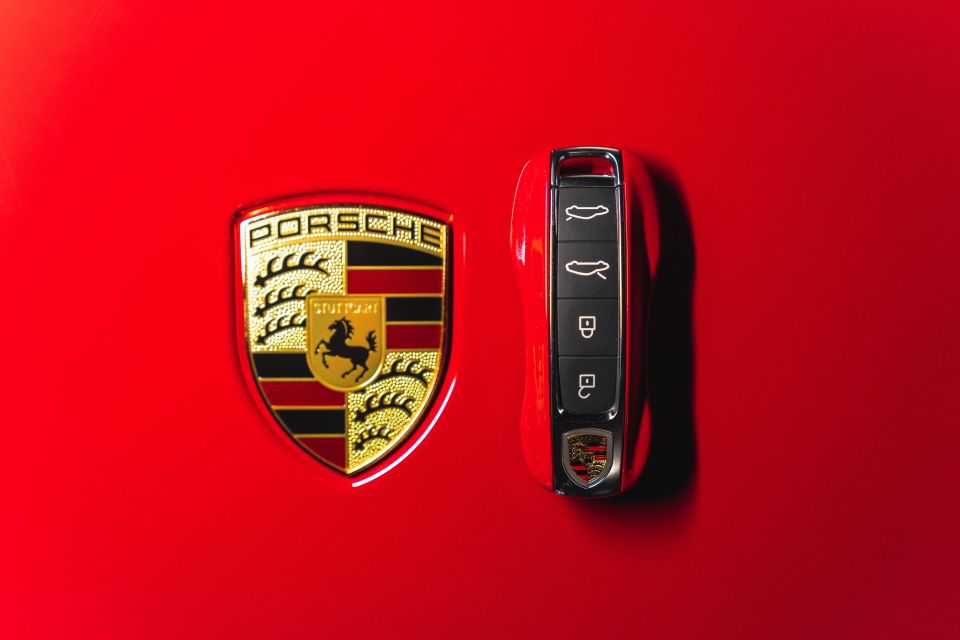
Click the images for the full gallery
Where expert car reviews meet expert car buying – CarExpert gives you trusted advice, personalised service and real savings on your next new car.
Alborz is the founder of CarAdvice (sold to Nine and now Drive) and co-founder of CarExpert. He is an honourary adjunct professor & entrepreneur in residence at the University of QLD. He loves naturally-aspirated V8s, V10s and V12s and is in denial about the impending death of the internal combustion engine. The best way to reach him is via Instagram.


Andrew Maclean
3 Months Ago
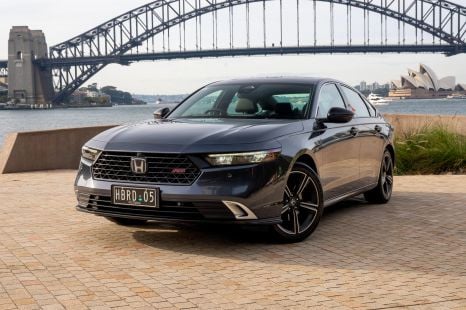

Andrew Maclean
3 Months Ago
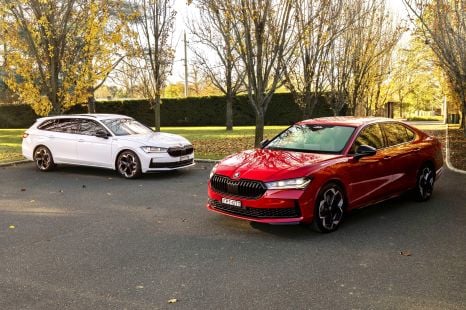

Max Davies
3 Months Ago
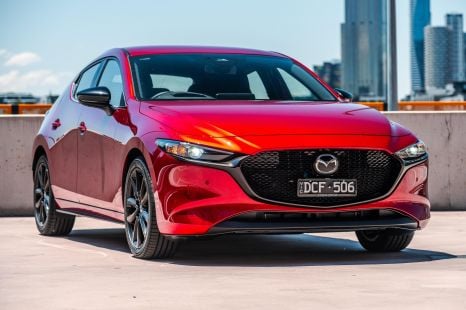

Josh Nevett
2 Months Ago


Josh Nevett
2 Months Ago


James Wong
2 Months Ago